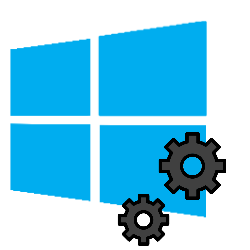
Customize the Windows Taskbar all the way to your liking. Change the colors, among other things, and add frequently used programs.
Taskbar
The Taskbar occupies a central place in Windows. This is the bar at the bottom of the screen. Here are the Start button and programs icons. These icons are like shortcuts to quickly access those programs. Windows already puts a few shortcuts on the Taskbar by default. But you can arrange the Taskbar completely according to your own wishes. For example, add or remove shortcuts, change the colors and position of the Taskbar, or hide it.
Pin programs to Taskbar
Easily place frequently used programs in the Taskbar. This means you no longer have to search for a program via the Start menu or Explorer. This is how it works:
- Click the Start button in the Taskbar (the Windows icon).
- Right click on the name of the program.
- In Windows 10, click More > Pin to taskbar. In Windows 11, click Pin to taskbar.
Remove Program from Taskbar
You can also remove the pinned programs. You will then remove the shortcut to the program and not the program itself. So this is still on the PC.
- Right-click the icon in the Taskbar that you want to remove.
- click on By tunpin toolbar.
The icon is no longer on the Taskbar. Still open the program? Do this via the Start button (the Windows icon) and click on the name of the program.
Hide toolbar
Would you like the Taskbar to appear only when you need it? Set this up like this:
- Right-click on an empty spot in the Taskbar.
- click on Taskbar Settings.
- Hide the Taskbar. Do this like this:
- In Windows 10, click the slider under “Automatically hide the taskbar in desktop mode” to enable the feature. The text ‘On’ appears behind the slider.
- In Windows 11, click the small arrow next to ‘Taskbar behavior’ at the bottom. Check the ‘Automatically hide taskbar’ option.
Adjust colors
Make the Taskbar more personal. Set a nice color for this:
- Click the Start button.
- click on Institutions.
- click on Personal settings.
- click on Colors.
- Under Windows Colors, click a color.
- Activate this color. Do this like this:
- In Windows 10, under ‘Show accent color on the following surfaces’, check Start, taskbar and action center.
- In Windows 11, turn on the slider behind ‘Show accent color on Start and the taskbar’.
The Language bar now changes to the color you set.
Add icons to System Tray
The System Tray is the right portion of the Taskbar. Since the introduction of Windows 11, the System Tray has been called the taskbar corner. This includes the clock. Show other icons if necessary. This is how it works in Windows 10:
- Right-click on an empty spot in the Taskbar.
- click on Taskbar Settings.
- Under ‘System Tray’, click Select which icons appear on the taskbar.
- Click the sliders next to the items you want to display in the System Tray to enable the feature. The text ‘On’ appears behind the slider.
Windows 11 users may add additional icons to the taskbar corner. Do this like this:
- Right-click on the Taskbar.
- click on Taskbar Settings.
- Click on the small arrow next to ‘Overflow menu in the corner of the taskbar’.
- Click the sliders next to the items you want to appear in the toolbar corner to activate the function. The text ‘On’ appears behind the slider.
Place Customize taskbar
Prefer to have the Taskbar in a different place than at the bottom of the screen? Adjust the location in Windows 10:
- Right-click on an empty spot in the Taskbar.
- click on Taskbar Settings.
- Click the drop-down menu under ‘Location of taskbar on screen’.
- click on Left, above, Right or below.
This feature is not available in Windows 11.
Smaller Icons
Want to put more programs on the Taskbar? Then resize the icons in Windows 10.
- Right-click on an empty spot in the Taskbar.
- click on Taskbar Settings.
- Click on the slider under “Use small taskbar buttons” to activate the function. The text ‘On’ appears behind the slider.
This feature is not available in Windows 11.
Resize Taskbar
Make the Taskbar in Windows 10 higher if necessary:
- Move the mouse to the top edge of the Taskbar.
- Press the mouse button when a double arrow appears.
- Drag the Taskbar up.
- Release the mouse button.
Does not it work? The Taskbar may be locked. Remove the lock like this:
- Right-click on the Taskbar.
- Uncheck for ttoolbar enlargeparts or Lock all Taskbars.
This feature is not available in Windows 11.